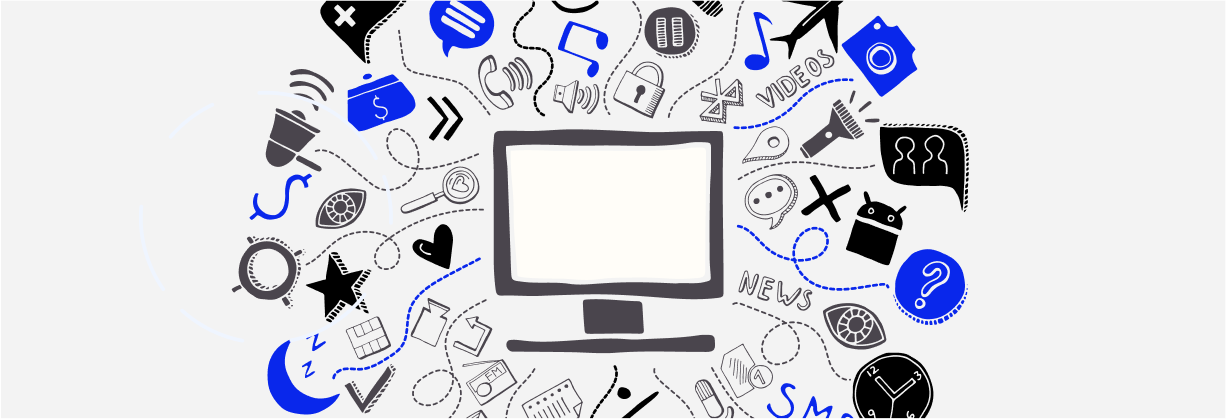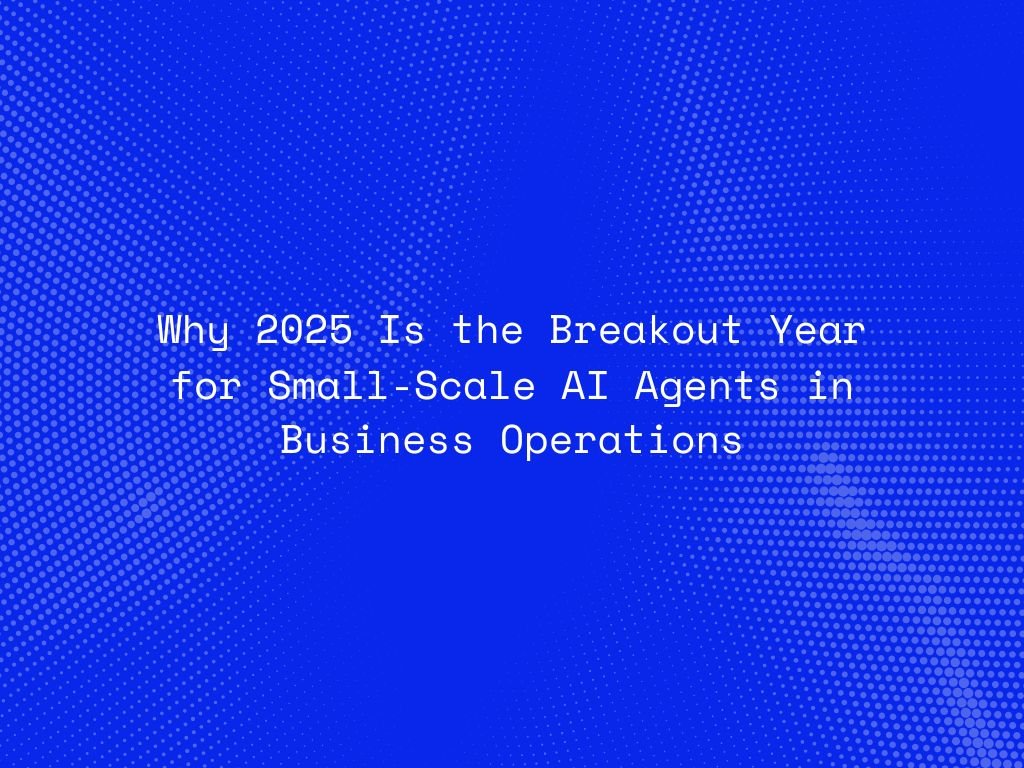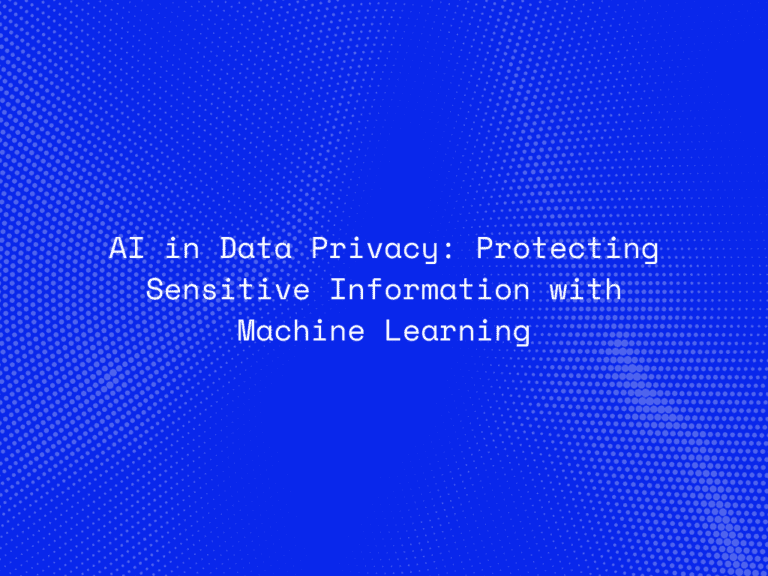Artificial Intelligence has long promised to transform how businesses operate—but in 2025, it’s the rise of small-scale AI agents that’s turning potential into practice. These lightweight, task-specific agents are redefining how organizations execute everyday processes, from automating emails and workflows to making intelligent decisions at the edge.
Unlike large monolithic AI systems that require significant infrastructure and training, small-scale AI agents are nimble, specialized, and highly deployable. As enterprise focus shifts toward agility and targeted automation, 2025 is proving to be the tipping point for these agents across industries.
What Are Small-Scale AI Agents?
Small-scale AI agents are autonomous or semi-autonomous systems designed to handle specific tasks within a broader business ecosystem. Unlike general-purpose models, these agents:
-
Have a narrow focus (e.g., invoice classification, calendar management, or chatbot queries)
-
Can operate locally or in the cloud
-
Require minimal training data
-
Are often built using APIs, plug-and-play frameworks, or low-code tools
They are part of a broader shift toward modular AI, where intelligence is distributed across multiple agents rather than concentrated in a single system.
Why 2025? What’s Driving the Momentum?
Several converging trends are making 2025 the breakout year for small-scale AI agents:
1. Maturity of LLM Ecosystems
Large Language Models (LLMs) like GPT-4, Claude, and Gemini have reached a point of stability and accessibility, allowing developers to build agents on top of them without starting from scratch.
2. Rise of Agent Frameworks
Frameworks like LangChain, AutoGen, CrewAI, and OpenAI’s Assistant API have lowered the barrier to creating AI agents that can reason, act, and interact autonomously.
3. Business Need for Targeted Automation
Companies no longer want massive, costly AI overhauls. Instead, they’re adopting small agents that can:
-
Automate specific workflows
-
Support customer service
-
Handle back-office tasks These agents solve real problems without disrupting existing systems.
4. Edge AI and Cost Efficiency
With improvements in edge computing, agents can now run locally on devices—reducing latency and cloud costs, and improving data privacy.
5. Employee Augmentation, Not Replacement
Small-scale agents are being used to support—not replace—workers. For example:
-
A sales assistant AI drafts follow-ups
-
An HR agent filters resumes
-
A finance agent reconciles expenses
This collaborative model makes adoption easier and aligns with workforce strategies.
Key Applications in Business Operations
1. Workflow Automation
Agents now handle repetitive tasks such as:
-
Data entry
-
Report generation
-
Inventory updates They integrate with tools like Salesforce, Slack, and HubSpot via APIs or bots.
2. Smart Scheduling and Coordination
Calendar agents can schedule meetings, resolve conflicts, and even propose agendas by analyzing participants’ preferences and availability.
3. Customer Support and Ticket Triage
AI agents can read support tickets, classify them, and assign them to the right department—or respond directly to routine queries.
4. Document and Email Management
Agents extract data from invoices, legal documents, or contracts, and summarize or route emails for faster decision-making.
5. IT and DevOps Support
Agents in IT can:
-
Auto-resolve simple tickets
-
Monitor infrastructure performance
-
Alert human teams to anomalies

Benefits of Small-Scale AI Agents
-
Fast Deployment: Can be implemented in days—not months
-
Cost-Effective: Require fewer resources and less training data
-
Modular and Scalable: Easy to plug into existing systems and scale as needed
-
Improved Productivity: Automate mundane tasks, freeing humans for strategic work
-
Customizable: Agents can be fine-tuned for department-specific goals
Real-World Examples
-
Finance: An expense report agent categorizes costs and flags discrepancies automatically
-
HR: A recruitment agent screens resumes and schedules interviews
-
Sales: An AI CRM assistant drafts personalized outreach emails using past interaction data
-
Manufacturing: Maintenance agents predict equipment failure and schedule service proactively
Challenges to Overcome
While the momentum is strong, organizations must address some hurdles:
-
Integration Complexity: Ensuring agents work well within existing workflows
-
Security and Governance: Managing access to sensitive data
-
Performance Monitoring: Tracking and optimizing agent outputs over time
-
Avoiding Agent Sprawl: Too many disconnected agents can create chaos instead of clarity
The solution? Companies need agent orchestration—tools and strategies that manage interactions between agents, users, and systems cohesively.
Looking Ahead: What’s Next for AI Agents in Business?
By the end of 2025, we’ll likely see:
-
Agent Marketplaces where companies can purchase pre-trained agents for specific roles
-
Self-updating agents that retrain on company data automatically
-
Cross-agent collaboration, where multiple AI agents cooperate to complete complex tasks
-
Embedded agents in SaaS platforms, allowing every app to come with built-in intelligence
Ultimately, small-scale AI agents are leading the way toward hyper-efficient, AI-augmented organizations where automation is tailored, strategic, and accessible.
Conclusion
2025 marks the breakout year for small-scale AI agents—not because of hype, but because the ecosystem is ready, the tools are mature, and the business demand is clear. These agents are bridging the gap between AI potential and real-world business impact—quietly, efficiently, and effectively.
They’re not here to replace people. They’re here to empower them.




